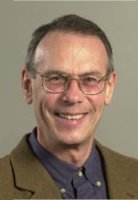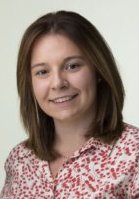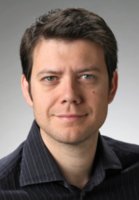Keynote speakers
|
Robert Charlier, University of Liège (ULg), Belgium
|
| Title: Sealing nuclear waste underground disposals: challenges of numerical modelling |
 |
Robert Charlier is full Professor in Geotechnical Engineering at the Université de Liège, Belgium. He is one of the founding members of Lagamine and has continued to develop the code ever since. His research concerns environmental geomechanics, geomaterial mechanics, reservoir engineering and numerical modelling of geostructures. In particular, he works on thermo-hydro-mechanical couplings of unsaturated media in the context of nuclear waste storage, on constitutive laws for geomaterals and enriched continuum and on geothermal issues for underground storage and exploitation of energy. Robert has been a member of many scientific committees (e.g., Belgian chapter of Rock Mechanics society and of Engineering Geology society, section 9 of CoNRS France, board of director from Liege University, INERIS, EURIDICE URL). He was dean of the engineering faculty of Liege University and is currently president of IFRES (the Liege University Learning Lab.).
|
|
Anne-Catherine Dieudonné, Technical University of Delft (TU Delft), The Netherlands
|
Title: Development and implementation of a cohesive zone damage-healing model in LAGAMINE
|
|
Anne-Catherine Dieudonné is an Assistant Professor in the section of Geo-Engineering at TU Delft. Her research focuses on assessing the impacts of environmental loads on the behaviour of geomaterials and on the performance and resilience of geotechnical structures. Anne-Catherine favours a combined approach of experimental testing, constitutive modelling and numerical analysis (developing and using the finite element code LAGAMINE). In 2017, she received the prestigious Ioannis Vardoulakis Prize, and was in 2019 awarded a NWO-Veni grant to investigate the self-healing capacity of clays. She is the secretary of the Dutch Association of Engineering Geology, and a nominated member of two technical committees of the ISSMGE, namely TC105 (Geo-Mechanics from Micro to Macro) and TC308 (Energy geotechnics).
|
 |
|
Alessio Ferrari, Ecole Polytechnique Fédérale de Lausanne (EPFL), Switzerland
|
Title: Multiphysical behaviour of clayey barriers for deep nuclear waste disposal
|
 |
Alessio Ferrari is Research Associate at the Swiss Federal Institute of Technology in Lausanne (EPFL) since 2009, where he is lab chief expert in Experimental Geomechanics, and he is Associate Professor of Geotechnical Engineering at the Università degli Studi di Palermo (Italy) since 2015. After his PhD in 2007, he was appointed as a Marie-Curie post-doctoral fellow at the EPFL and at the Polytechnic University of Catalonia (UPC, Spain). He was awarded a Marie-Curie Reintegration Grant in 2009. His current main research interests are in Geomechanics for geo-energy systems, fundamental Soil Mechanics with particular focus on unsaturated soils, development of advanced testing facilities for multiphysical testing of soils and shales, bentonite-based engineered barriers, thermo-hydro-chemo-mechanical behaviour of complex geomaterials, pore scale testing. He is vice chair of the Technical Committee TC-308 “Energy Geotechnics” of the ISSMGE. He is Associate Editor for the journal Geomechanics for Energy and the Environment, and he is member of the editorial boards for the journals Géotechnique, Acta Geotechnica and Soils and Rocks.
|
|
Pierre Bésuelle, CNRS and Université Grenoble Alpes (UGA), 3SR, France
|
| Title: General overview of computational double-scale approaches (FEM2, FEM x DEM) for geomaterials |
|
Pierre Bésuelle is CNRS senior Researcher at the Laboratoire 3SR of the Université Grenoble Alpes (UGA). His major research field is in advanced geomechanics, both from the experimental and theoretical viewpoints, with special interest in strain localization phenomena and multiscale analysis. In the recent years, he has been focusing on the deformation processes and failure in porous stones, both experimentally using a true triaxial cell, microtomography and digital image correlation, and numerically by developing integrated two-scale analysis using FEM2 approach for thermo-hydro-mechanical couplings. He was awarded the CNRS bronze medal in 2007. He has supervised about 10 PhD theses. Since 2016, he is deputy director of the Laboratoire 3SR.
|
 |
|


